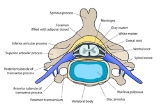trucomfort
“Discomfort is based on poor biomechanics,” concluded researcher M.G. Helander after investigating how people perceive whether a chair is comfortable or not. “Comfort is based on aesthetics,” he concluded.
People have in mind mechanic features, such as seat depth and height, stability, back rest angle or its consequences (i.e.: fatigue) when they determine that a chair is uncomfortable.
Nevertheless, buyers choose their chairs based purely on inconsequential characteristics, like...
…Aesthetic features: plushness, upholstery and color
…Emotional perceptions: “It feels good”; “I like it”; “Makes me feel relaxed”; “Ain’t them beautiful?”
Thus, chairs that were perceived as comfortable when bought end up discarded or replaced because the owner became aware of the bad mechanical design. Unfortunately, most often than not, when the buyer realizes he made a bad decision, it’s usually too late. Even worse, most people are resigned to using a cumbersome design.
If you selected or are about to buy a chair based on emotional perceptions, you better reconsider your decision. Perhaps it’s time to get rid of your “comfortable” but not so well-designed chair.
But… How to find out whether you are facing an ergonomic seat or a bad design? This remains a controversial question among manufacturers and researchers.
In an attempt to predict subjective evaluations or ergonomic seats, DeLooze et al reviewed more than 20 studies. All of them measured objective parameters, such as:
Pressure at the backrest and seat pan
Number of body movements needed
Posture
Muscle activity (using electromyography)
Spinal loading
They found that the best predictor of subjective comfort was the first one: the amount of pressure and its distribution over the backrest or the seat pan.
Amazingly, if the chair was designed to provide uniform pressure distribution and seat support, the users reported too much discomfort. Chairs that were evaluated as the most comfortable offered varying levels of pressure in the seat pan and the backrest.
How can this be explained?
It so happens that most human spines are not symmetric. If you looked at frontal-view X-ray plaques, you would see many people have asymmetric backs; that is, either the left or right side is slightly wider.
In fact, human bodies show asymmetries everywhere: one leg larger than the other, an eyebrow higher, etc. and the back is not an exception. The greater the asymmetry in the length of legs or arms, the more likely the individual will suffer from back pain.
Problem is… chair designers assume symmetry when they develop a new product.
During an ergonometric study, subjects were allowed not only to adjust the height of their backrests, but also to displace it sideways: some adjusted it to the left, some to the right and some left it aligned to the centerline.
About 70% of the participants evaluated chairs with left-right movable backrests as more comfortable that chairs with fixed support. In a similar study, chairs with lumbar support ranked better than chairs without support for the lower back.
So, how does your chair feel now?
Rachel Clarkson
Rachel Clarkson is the founder of the Back Pain Blog: http://www.trucomfort.com/blog
People have in mind mechanic features, such as seat depth and height, stability, back rest angle or its consequences (i.e.: fatigue) when they determine that a chair is uncomfortable.
Nevertheless, buyers choose their chairs based purely on inconsequential characteristics, like...
…Aesthetic features: plushness, upholstery and color
…Emotional perceptions: “It feels good”; “I like it”; “Makes me feel relaxed”; “Ain’t them beautiful?”
Thus, chairs that were perceived as comfortable when bought end up discarded or replaced because the owner became aware of the bad mechanical design. Unfortunately, most often than not, when the buyer realizes he made a bad decision, it’s usually too late. Even worse, most people are resigned to using a cumbersome design.
If you selected or are about to buy a chair based on emotional perceptions, you better reconsider your decision. Perhaps it’s time to get rid of your “comfortable” but not so well-designed chair.
But… How to find out whether you are facing an ergonomic seat or a bad design? This remains a controversial question among manufacturers and researchers.
In an attempt to predict subjective evaluations or ergonomic seats, DeLooze et al reviewed more than 20 studies. All of them measured objective parameters, such as:
Pressure at the backrest and seat pan
Number of body movements needed
Posture
Muscle activity (using electromyography)
Spinal loading
They found that the best predictor of subjective comfort was the first one: the amount of pressure and its distribution over the backrest or the seat pan.
Amazingly, if the chair was designed to provide uniform pressure distribution and seat support, the users reported too much discomfort. Chairs that were evaluated as the most comfortable offered varying levels of pressure in the seat pan and the backrest.
How can this be explained?
It so happens that most human spines are not symmetric. If you looked at frontal-view X-ray plaques, you would see many people have asymmetric backs; that is, either the left or right side is slightly wider.
In fact, human bodies show asymmetries everywhere: one leg larger than the other, an eyebrow higher, etc. and the back is not an exception. The greater the asymmetry in the length of legs or arms, the more likely the individual will suffer from back pain.
Problem is… chair designers assume symmetry when they develop a new product.
During an ergonometric study, subjects were allowed not only to adjust the height of their backrests, but also to displace it sideways: some adjusted it to the left, some to the right and some left it aligned to the centerline.
About 70% of the participants evaluated chairs with left-right movable backrests as more comfortable that chairs with fixed support. In a similar study, chairs with lumbar support ranked better than chairs without support for the lower back.
So, how does your chair feel now?
Rachel Clarkson
Rachel Clarkson is the founder of the Back Pain Blog: http://www.trucomfort.com/blog


